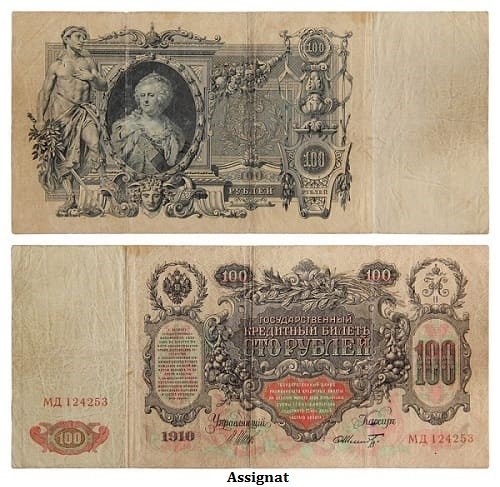

In 1790, the French government issued the Assignat, a form of paper money intended to pay off the national debt and finance the war effort. The assignats were backed by the value of confiscated lands, however, the value of the notes quickly decreased due to inflation. This devaluation of the assignat had a devastating effect on the French economy, causing rampant social unrest and economic hardship. The assignat was replaced by the mandate in 1796, and abolished in 1802, leaving a legacy of inflation and instability in its wake.
A financial crisis is a situation in which financial institutions and markets experience difficulty functioning normally. It typically follows a period of rapid growth in the financial sector, during which time too much risk is taken on by borrowers, lenders and other participants. This leads to a sudden, unexpected drop in the value of financial assets, making it difficult for borrowers to service their debt and lenders to collect on their loans. This instability can cause a collapse of the financial system, economic instability, and even economic recession.
The debate surrounding the use of paper money as a form of currency is an ongoing one. Proponents of paper money argue that it is more convenient and efficient than coins and other forms of physical money and that it can facilitate credit transactions. On the other hand, opponents of paper money argue that it is an inflationary form of currency with no tangible asset backing its value, and it is vulnerable to counterfeiting. Both sides of the argument have legitimate points that need to be considered to make a balanced judgement. Ultimately, the paper money debate is likely to continue, as different countries have different approaches to the use of paper money in the economy.
Demand-pull inflation occurs when aggregate demand for goods and services increases faster than the economy’s ability to produce them.
Cost-push inflation happens when the prices of inputs such as labour materials, and energy increase.
Currency devaluation is when a country’s central bank lowers the value of its currency relative to foreign currencies.
Monetary expansion is the process of increasing the money supply.
Rising prices reduce the purchasing power of consumers and businesses, leading to lower economic growth and lower levels of employment.
Central banks often respond to rising inflation by raising interest rates, which can lead to higher borrowing costs for businesses and consumers.
Rising inflation can also lead to volatility in asset prices such as stocks, bonds, and real estate, creating increased uncertainty for investors and reducing their risk appetite.
 The breakdown of a system occurs when it is no longer able to adequately provide services, resources, or support to its citizens. This could take the form of a political system that is no longer functioning properly, an economic system that is unable to generate sufficient wealth, or a social system that has become unsustainable.
The breakdown of a system occurs when it is no longer able to adequately provide services, resources, or support to its citizens. This could take the form of a political system that is no longer functioning properly, an economic system that is unable to generate sufficient wealth, or a social system that has become unsustainable.
In such cases, the resulting chaos and disorder can cause significant disruption to everyday life, as people are left unable to meet their basic needs and may resort to violence to survive.
The assignat was an innovative monetary system implemented by the French government to generate and issue credit. Unfortunately, rampant counterfeiting, inflation, and other economic issues caused its downfall. The assignat serves as an example of how even radical reforms can quickly be undone by external economic issues. It also helped pave the way for modern central banking systems. Ultimately, it revolutionized French finance in its time.
Q1. How much was an assignat worth?
Ans. By the end of their circulating period, assignats were worth only ¼ of 1 percent of their face value. The total face value of assignats had reached 45 billion livres by 1796 making them virtually worthless.
Q2. Why did the assignat fail?
Ans. Assignats no longer circulated as a medium of payment but were an object of speculation. Specie was scarce but sufficient, and farmers refused to accept assignats, which were practically demonetized. In February 1793, citizens of Paris looted shops for bread they could no longer afford if they could find it at all.
Q3. How did the French Catholic Church lose power?
Ans. On October 10, 1789, the National Constituent Assembly seized the properties and land held by the Catholic Church and decided to sell them as assignats. On July 12, 1790, the assembly passed the Civil Constitution of the Clergy that subordinated the Catholic Church in France to the French government.